The scattering or spreading of seeds to different places is called seed dispersal.
Let’s talk about seed dispersal with this lesson.
If all seeds of a plant fall under the parent plant they will grow crowded together and many will die because of lack of space or air, water, sunlight and minerals. Therefore, it is better seeds getting scattered far and wide and have a better chance of growing in a suitable place without over crowding.
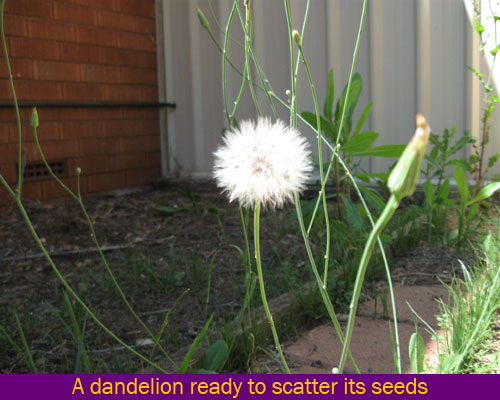
So, let’s talk about how seeds get dispersed by wind, water, animals and also, what types of features do seeds have to get dispersed through this lesson.
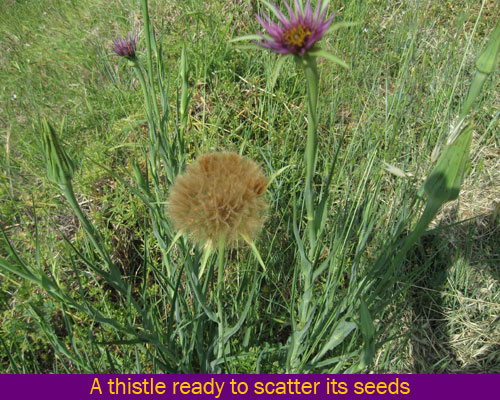
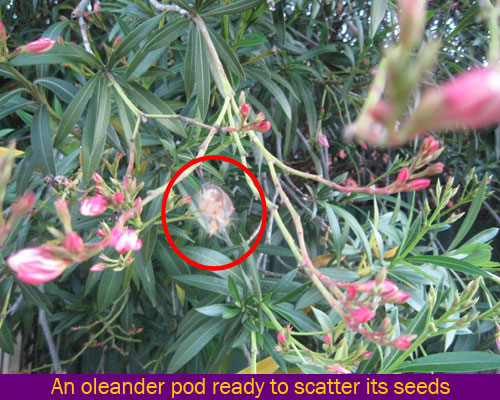
Examples of special features of seeds for dispersing seeds | ||||||
Sticky and have hooks | Wings | Hairy parachutes | Pods | Holes | Spongy layers of fibres | Spongy coverings |
Goosegrass | sycamore | Dandelion | peas | Poppy | Coconut | Water lilies |
Burdock | ash | thistle | lupins | orchid | Alder tree | |
Woodavens | maple | laburnum | ||||
| lime | gorse | ||||
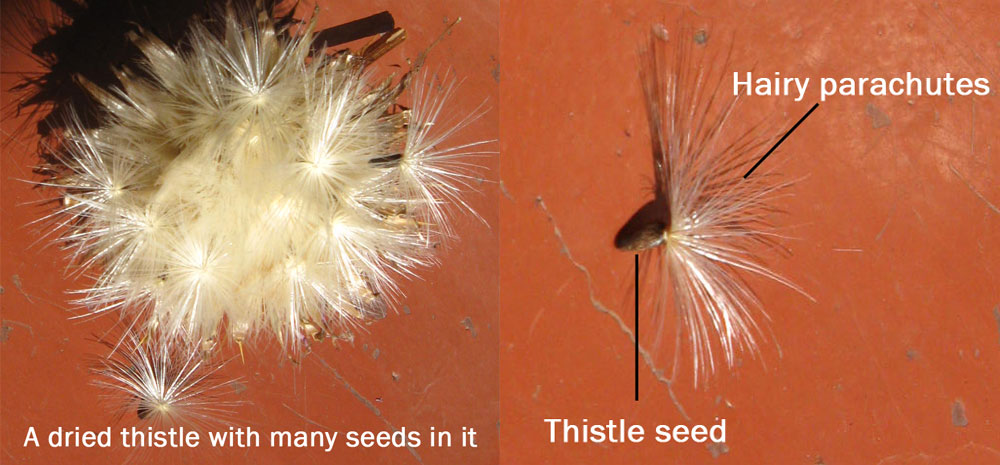
Examples of seed dispersal by wind
A dried thistle has many seeds with hairy parachutes which can be dispersed by wind
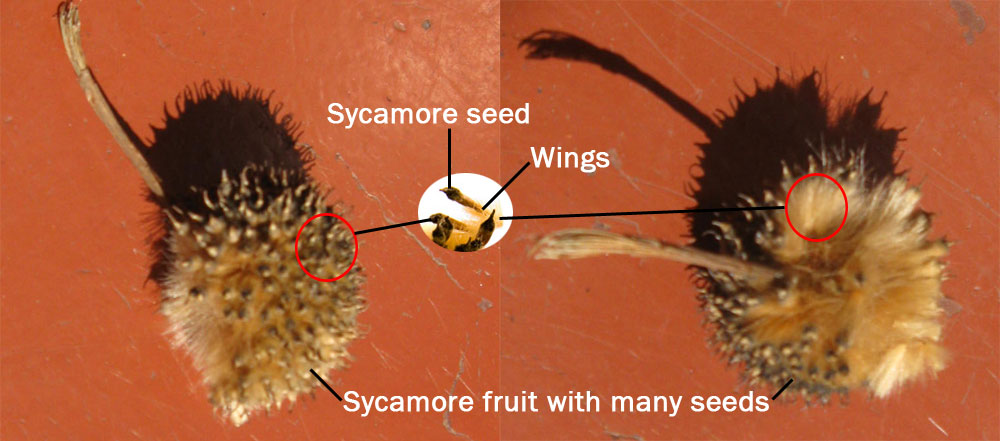
Examples of seed dispersal by wind
This is a dried sycamore fruit which bears many seeds with wings which can be dispersed by wind
Seeds which have wings and hairy parachutes on them are carried by the wind.
E.g. – sycamore, ash, maple, lime, dandelion and thistle
When pods dry, they split open suddenly and shooting the seeds away from the parent plant and this is easy when the wind is there.
E.g. – peas, lupins, laburnum and gorse
Some seeds have small holes in them, so they are very light in weight. When the wind rocks the plant, the seeds are scattered as if from a pepper pot.
E.g. – poppy and orchid fruits
Some seeds have spongy layers of fibres around them. These can trap air so the seeds can float. These seeds can travel, sometimes for hundreds of kilometers, from one island to another.
E.g. – Coconut

Some seeds have smaller spongy coverings which lets them float in lakes and rivers.
E.g. – water lilies, alder trees
Brightly coloured and juicy fruits are often eaten by animals like birds. The hard seeds inside these fruits pass out of the animal’s body in its droppings.
E.g. – blackberries, strawberries, raspberries and gooseberries
The seeds may finish up a long way from where they were first eaten.
Animals like squirrels and jays bury some nuts, ready to eat later. These animals often forget where they have hidden their food, and some of these seeds can grow.

Some seeds and fruits have hooks that catch on the fur or feathers of animals or on people’s clothes. If the seeds eventually drop off on the soil, they may grow.
E.g. – goosegrass, burdock, wood avens